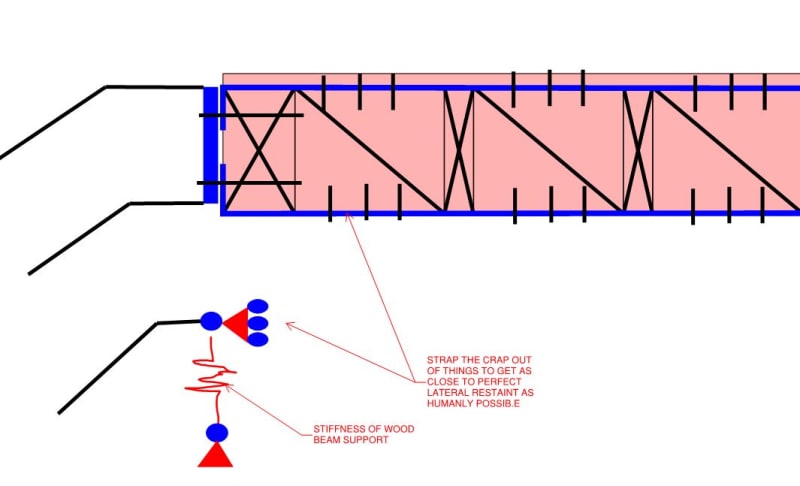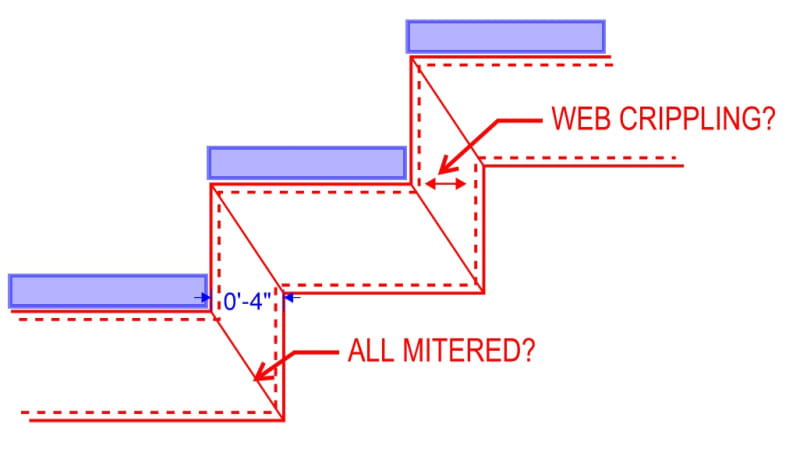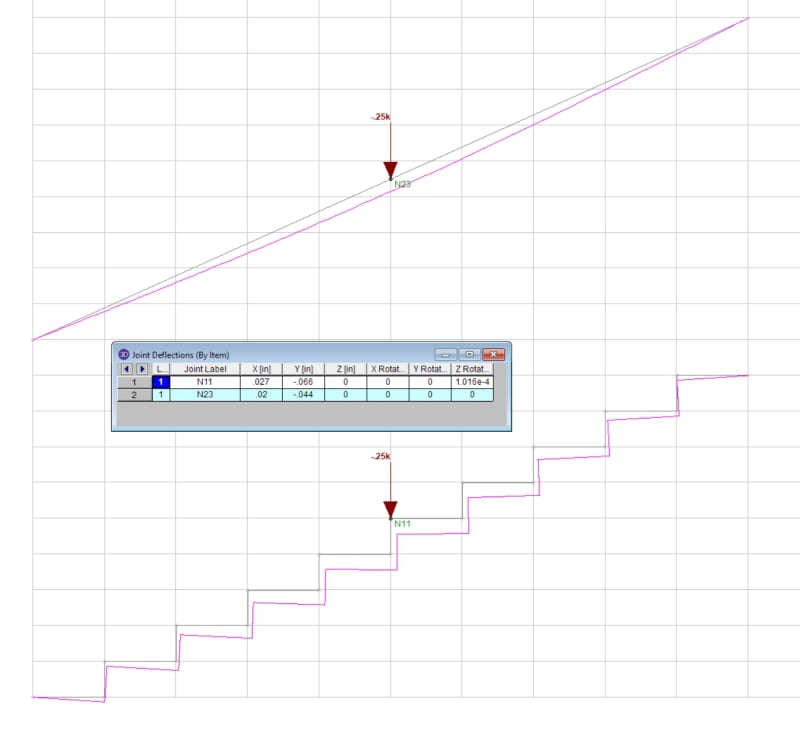I have a client that wants to use hss tubes to create a stair stringer in a zig zag pattern spanning diagonally between two wood beams. Essentially, the tubes will follow the path of the risers and treads with hss6x2x1/4 horizontals, and hss4x2x1/4 verticals. They'll be two of these frames, with angles spanning between them for the tread attachments.
I've designed the hss members to have fixed connections at each of vertical/horizontal member intersections, but I'm a little uncertain on what type of weld should be used to achieve this. The steel will be exposed per the architect, so any exterior plated connections are off the table. If anyone has done something similar in the past, what kind of connection did you use? Any suggestions or thoughts are welcomed.
I've designed the hss members to have fixed connections at each of vertical/horizontal member intersections, but I'm a little uncertain on what type of weld should be used to achieve this. The steel will be exposed per the architect, so any exterior plated connections are off the table. If anyone has done something similar in the past, what kind of connection did you use? Any suggestions or thoughts are welcomed.




